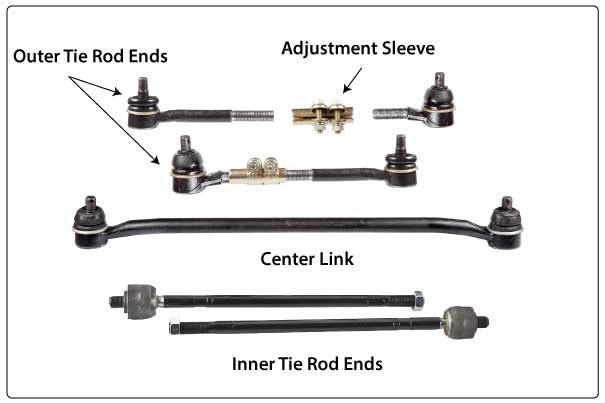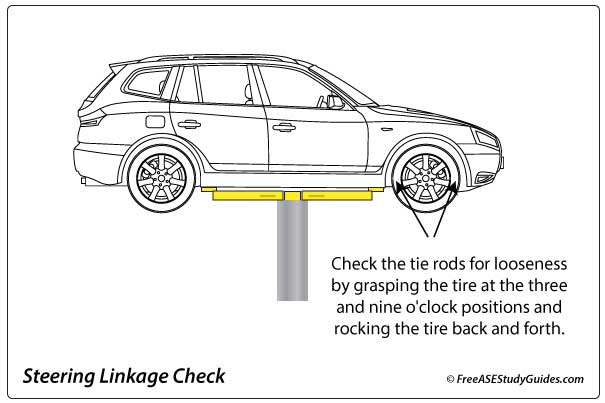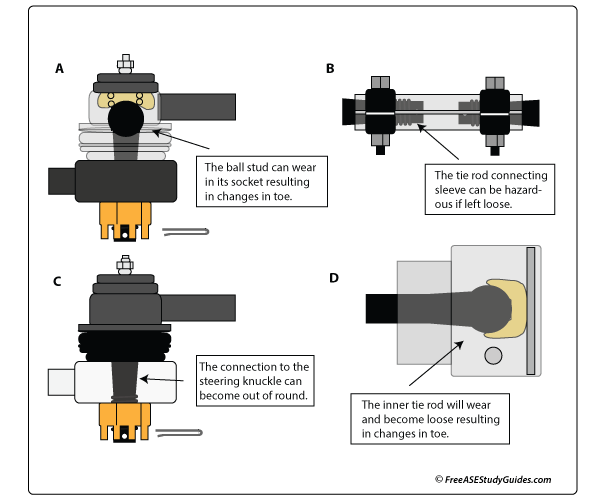Tie Rod End Looseness

Inner and outer tie rod ends link the steering rack or parallelogram steering linkage system to the steering arms of a vehicle. Their ball studs are designed similarly to ball joints, allowing smooth rotating action. The inner tie rods are towards the vehicle's center, and the outer tie rods are by the wheel.

Tie rods get loose, causing tire wear and vehicle wander. Most technicians instinctively check a wheel for looseness; it's a good habit. Check for loose tie rods by grasping the tire at its three and nine o'clock positions and rocking it back and forth. It should be tight.

Worn tie rods produce noise, tire wear, and a loose feeling of steering. The ball and stud have worn, and the slack and looseness affect its performance. This looseness can occur in the inner or the outer tie rod ends. It results in vehicle wander and difficulty traveling in a straight line.